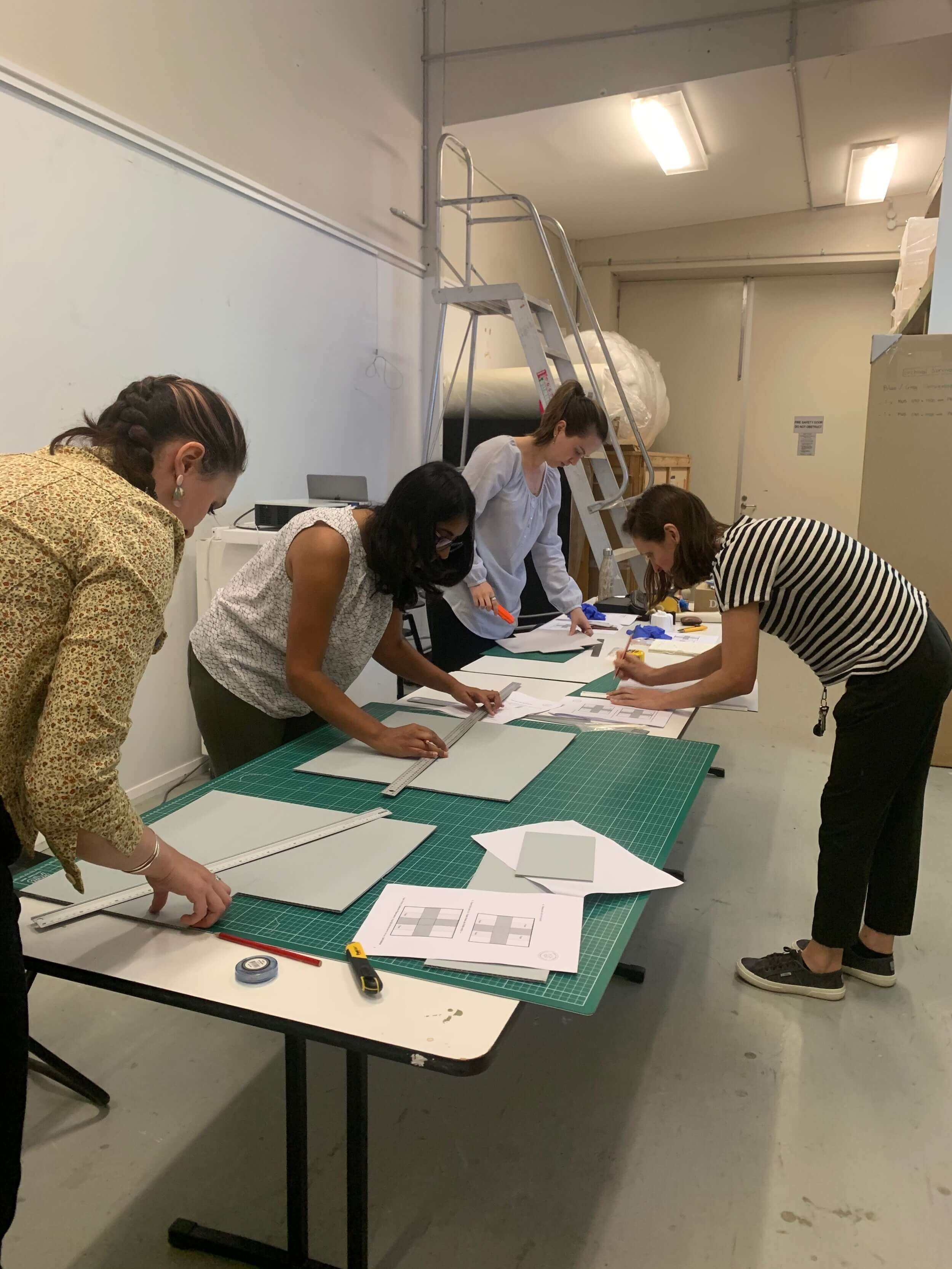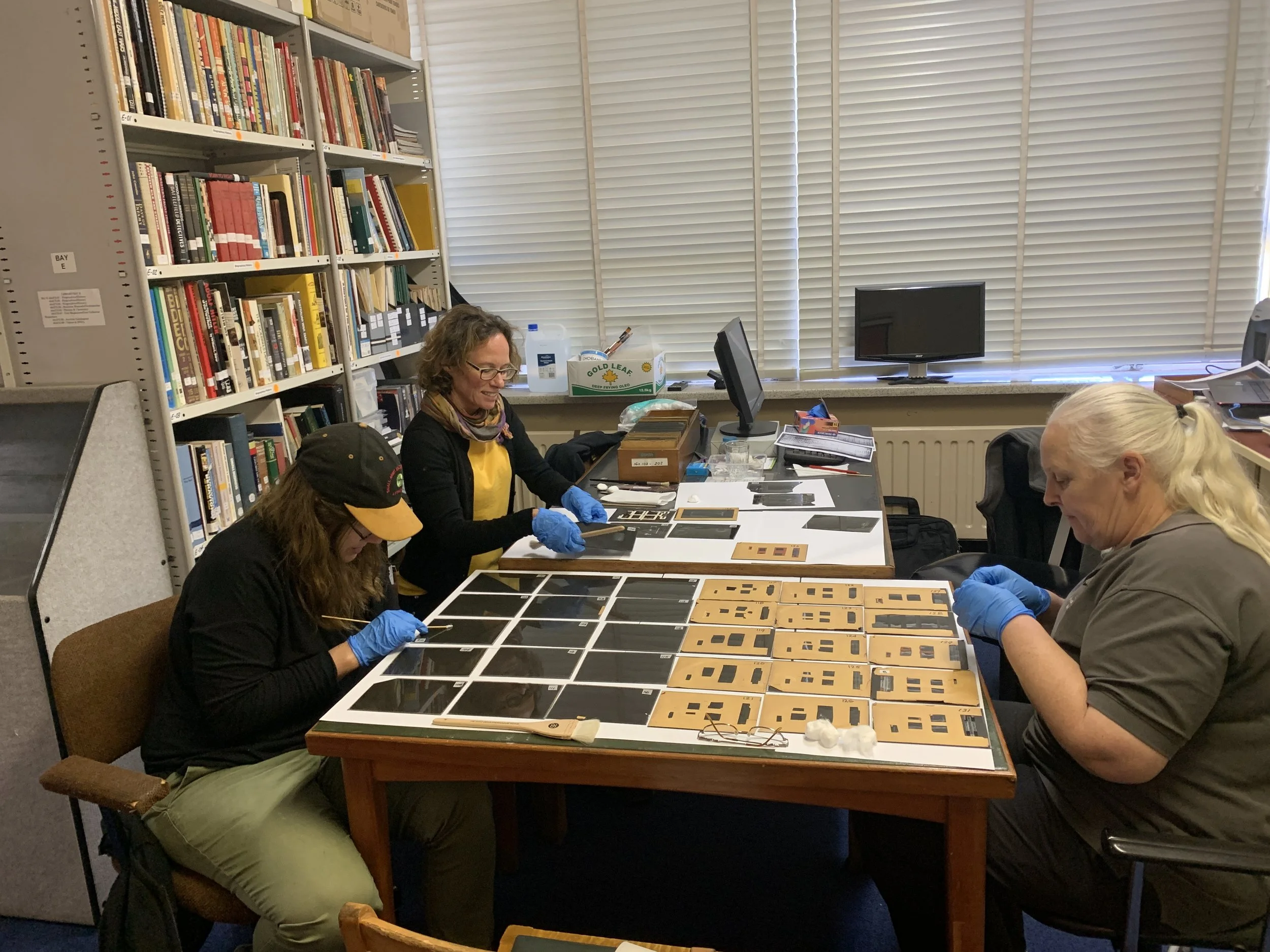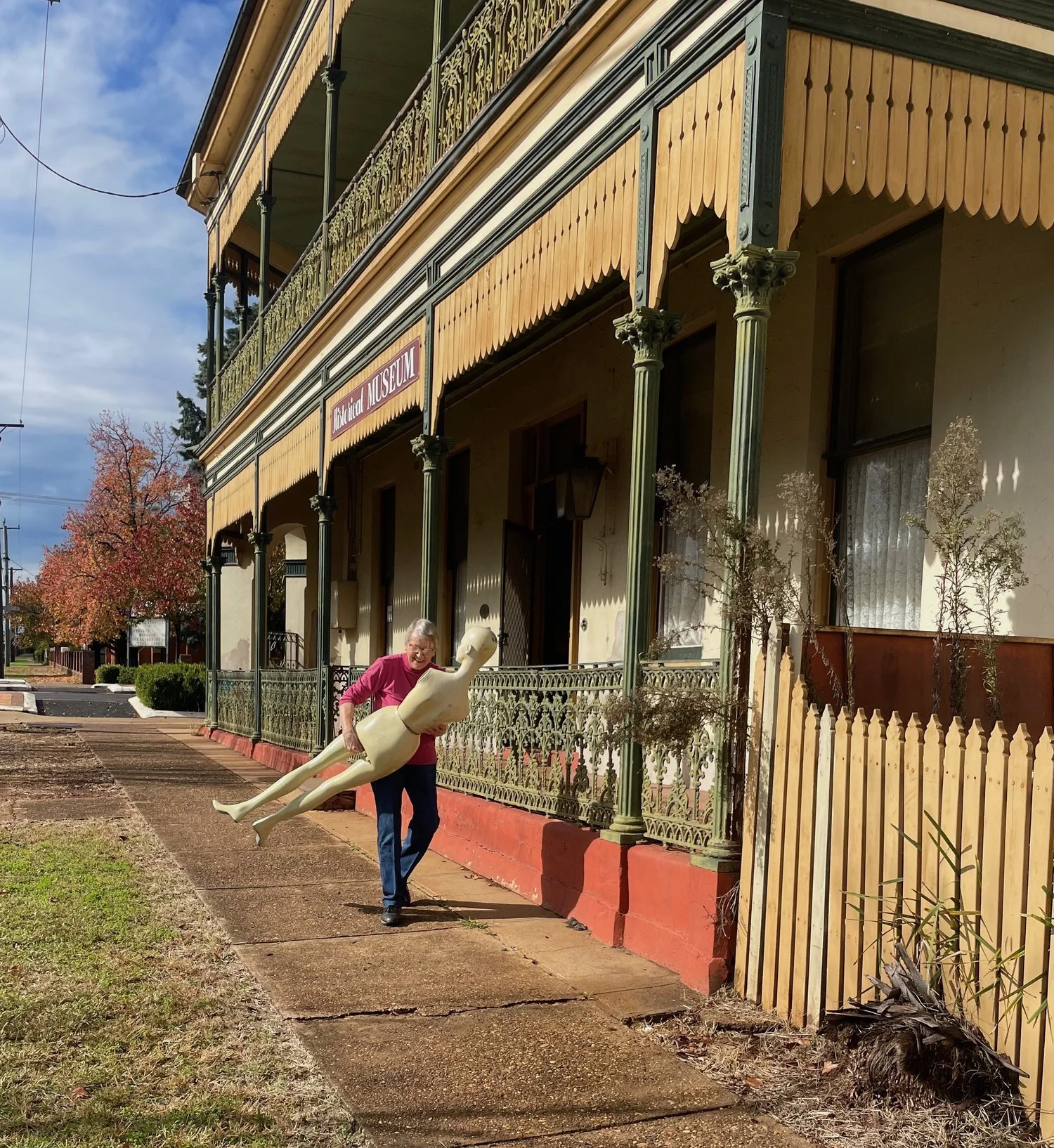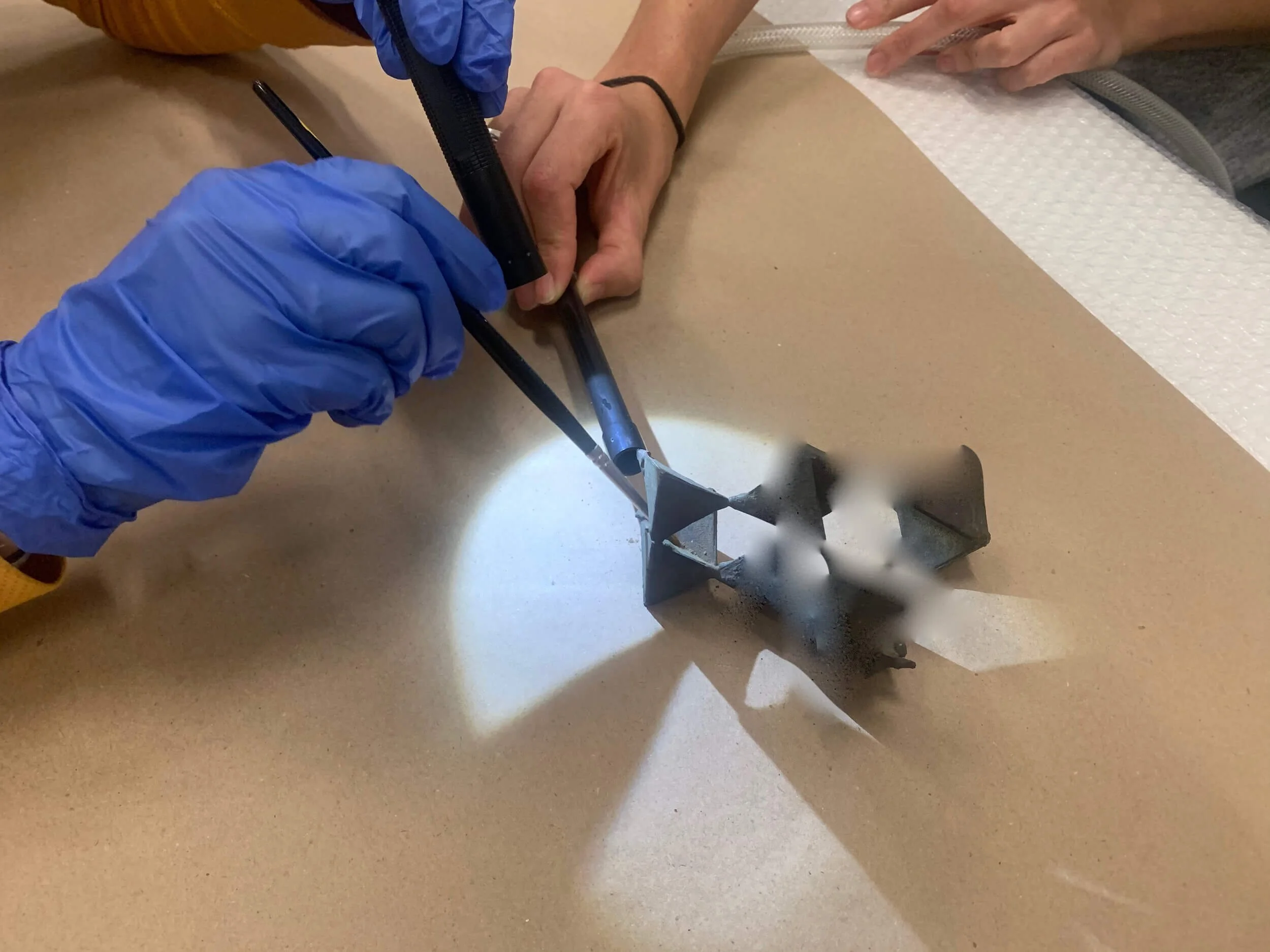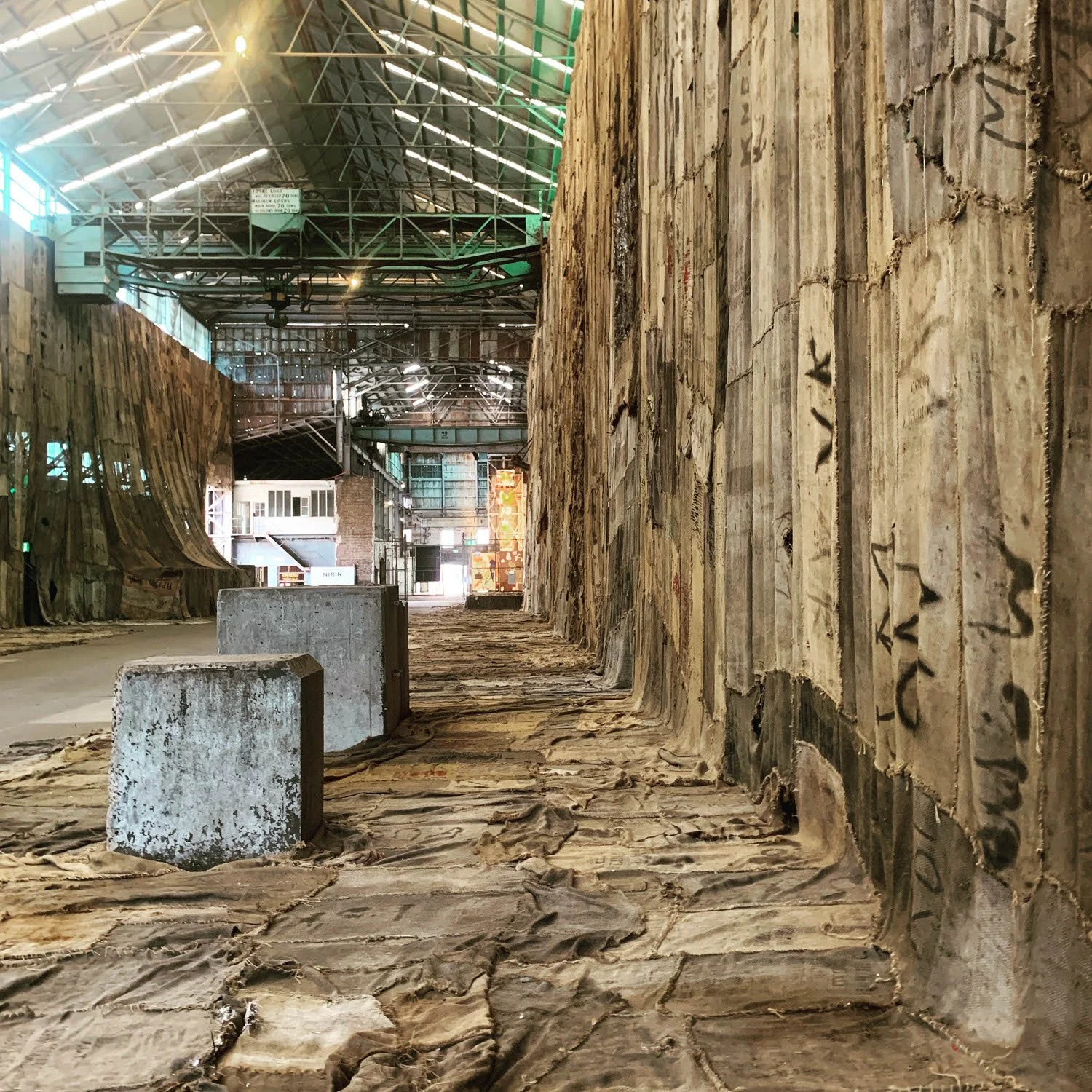Let’s Get Practical: Cleaning Collections and Custom Box Making Workshop
A recent workshop that I developed and delivered for Penrith Regional Gallery incorporated two aspects of collection care - cleaning of collections and box making. The staff at the Gallery were embarking upon a cataloguing and audit of the collection and decided that this would be an opportunity to clean and rehouse the collection.
Photograph by Camille Gillybœuf, Penrith Regional Gallery: Home of the Lewers Bequest, 2021
The workshop began with an overview of handling practices for some recently employed staff and then dived into the different types of objects and cleaning techniques and finished with making archival custom made boxes.
Delicately cleaning a small sculpture
Cleaning collections - Practical
When providing instructions on cleaning collections it is imperative to highlight the vulnerabilities of the different material types and the potential damage that may occur from the cleaning process. Understanding the condition of the objects is a critical aspect of the process.
Therefore, conditioning reporting was incorporated into the workshop to provide guidance to staff on conducting condition checks and understanding the collection condition prior to treatment. In addition, condition surveys can be used to leverage funding for conservation or better environmental conditions. When the staff were undertaking the collection audit this was the perfect time to incorporate a quick condition check using standardised terminology and references.
Time was spent on assessing various objects, identifying the material types, observing the level of dust and determining the treatment process. I provided clear guidance on handling, support, cleaning tools and processes.
It was imperative to provide both demonstrations and time for staff to practice the new techniques. All participants had the opportunity to use the various tools and techniques during the workshop. This was a great opportunity for discussion and questions regarding some of the techniques. Staff were surprised at how long it takes to clean a very small object.
Penrith Gallery staff measuring and constructing boxes
Camille with her custom made archival box. Photograph by Camille Gillybœuf, Penrith Regional Gallery: Home of the Lewers Bequest, 2021
Box making - Practical
This segment of the day followed from cleaning the collection and provided staff with box making skills to be incorporated into the audit and rehousing of the collection. The session included understanding the support requirements for the object, box style options and determining if the object was to be stored individually or part of a set.
Archival board and equipment had been discussed and purchased prior to the day. The archival board, fabrics and equipment were used to create custom made boxes for the more unusual shaped objects on the day.
The combination of cleaning and box making provided fundamental skills to the staff undertaking the collection audit. These two processes enabled the staff to integrate these steps into the workflow and provide better long term preservation of the collection.




